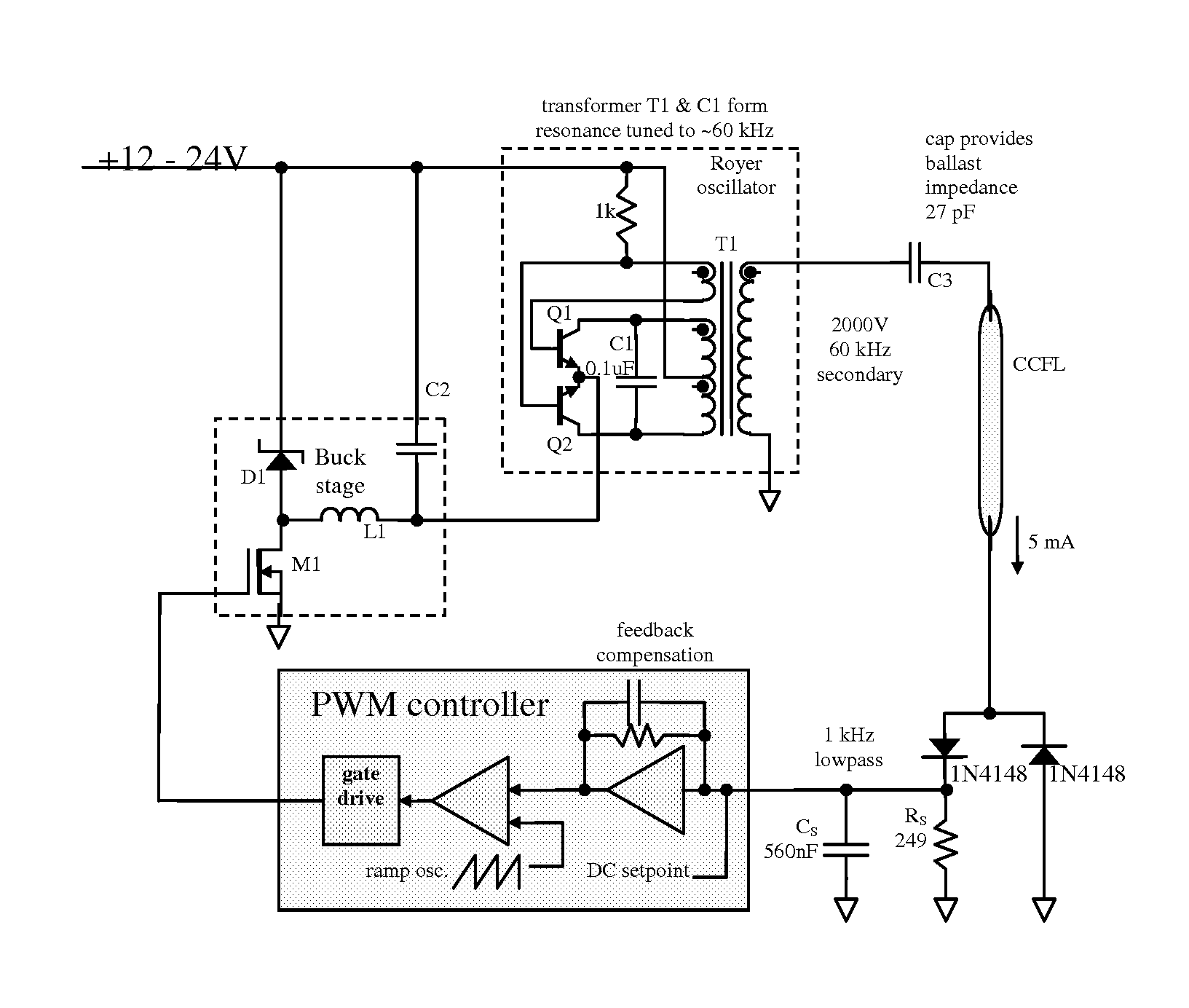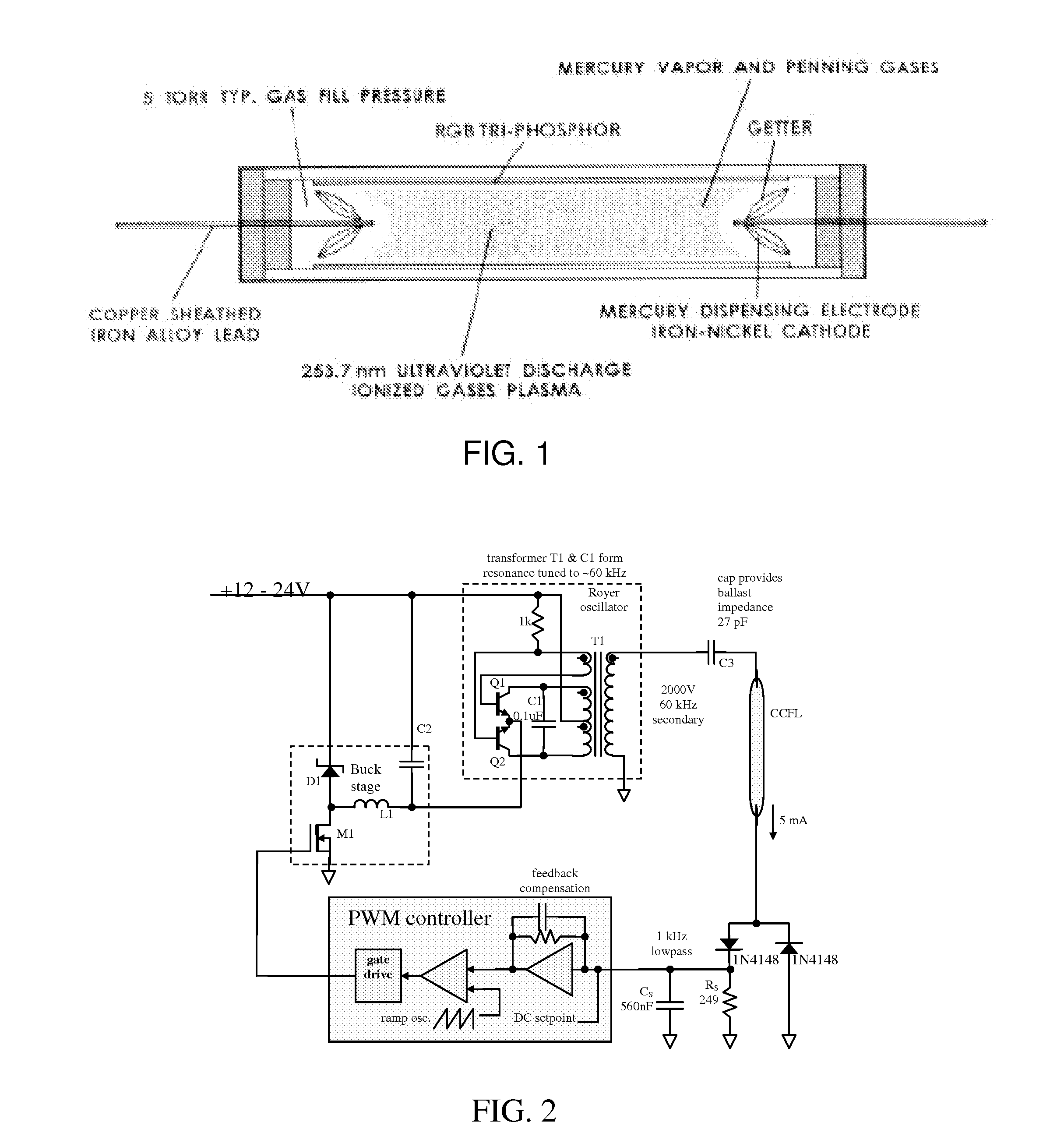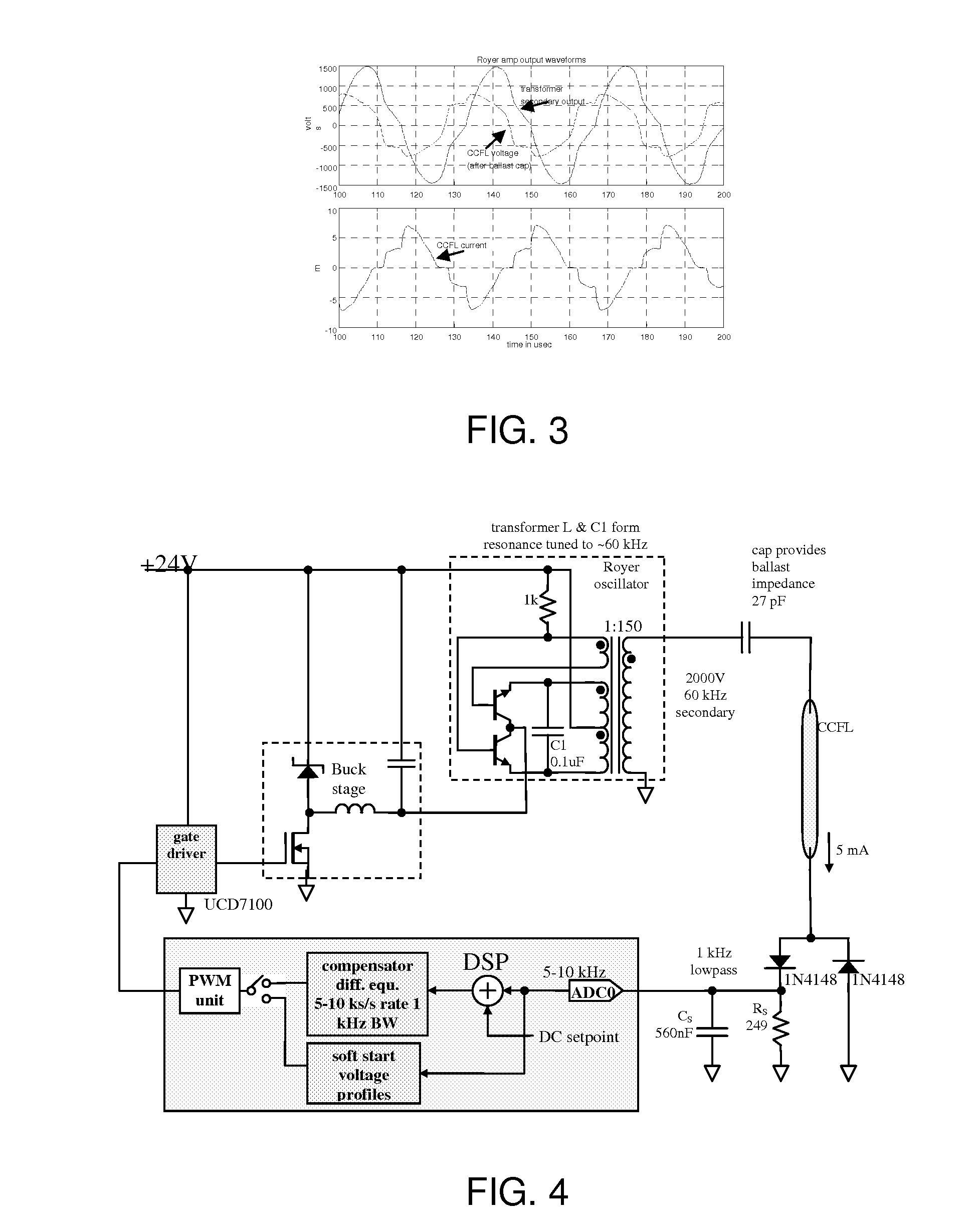LCD backlight driver
a backlight driver and driver technology, applied in the field of liquid crystal displays, can solve the problems of influencing events that affect sudden starts for a lifetime, and achieve the effect of improving any visual artifacts and excellent control of driving waveforms
- Summary
- Abstract
- Description
- Claims
- Application Information
AI Technical Summary
Benefits of technology
Problems solved by technology
Method used
Image
Examples
Embodiment Construction
[0024] Cold Cathode Fluorescent Lamps (CCFL) and External Electrode Fluorescent Lamps (EEFL) are similar to the neon gas-discharge lamp invented in 1910 by Georges Claude in Paris, France. Like all fluorescent lamps, they work by applying a sufficiently large voltage across the device to ionize the contained gas which stimulates the phosphor coating inside the glass lamp envelope.
[0025] CCFLs are so named because of the type of electrode in the lamp ends. Unlike architectural fluorescent lamps, cold cathode electrodes do not rely on additional means of thermonic emission besides that created by the electrical discharge The typical CCFL is a hollow glass cylinder coated inside with a phosphor material composed of rare earth elements and sealed with a gettered electrode at both ends. The lamps normally contain 2-10 milligrams of mercury along with a mixture of gases, such as argon and neon. Ultraviolet energy at 253.7 nm is produced by ionization of the mercury and penning gas mixtur...
PUM
 Login to View More
Login to View More Abstract
Description
Claims
Application Information
 Login to View More
Login to View More - R&D
- Intellectual Property
- Life Sciences
- Materials
- Tech Scout
- Unparalleled Data Quality
- Higher Quality Content
- 60% Fewer Hallucinations
Browse by: Latest US Patents, China's latest patents, Technical Efficacy Thesaurus, Application Domain, Technology Topic, Popular Technical Reports.
© 2025 PatSnap. All rights reserved.Legal|Privacy policy|Modern Slavery Act Transparency Statement|Sitemap|About US| Contact US: help@patsnap.com



